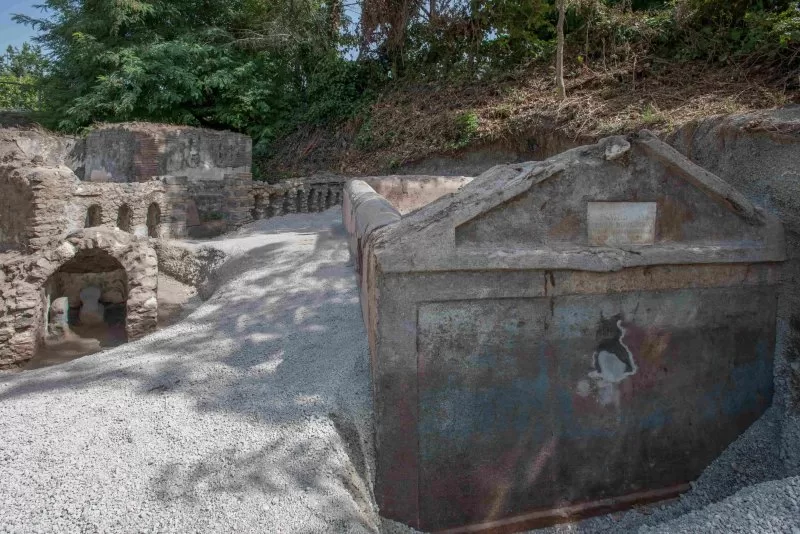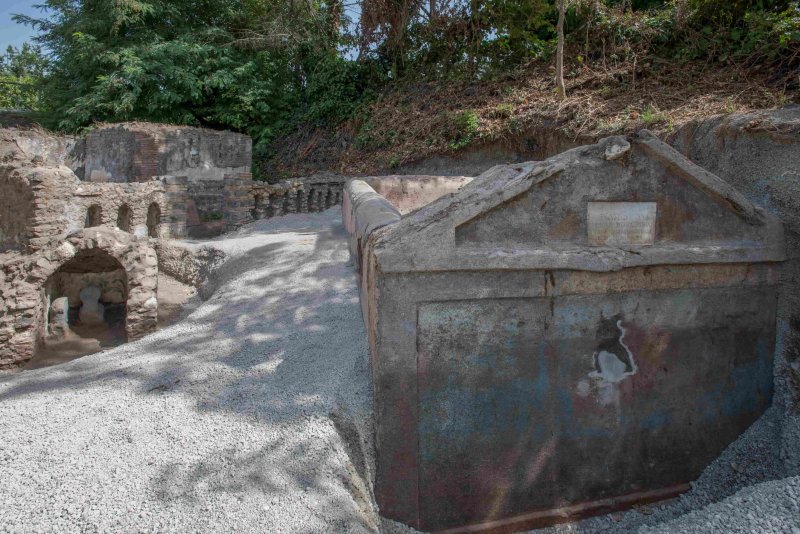The tomb of Marcus Venerius Secundio was discovered in in July 2021 in the necropolis of Porta Sarno in Pompeii, which is limiting daily visits to no more than 20,000 starting Friday. File Photo courtesy of Archaeological Park of Pompeii
Nov. 9 (UPI) — A volcanic eruption destroyed the Roman city of Pompeii in 79 AD, but an avalanche of tourists has caused officials to restrict daily visits to no more than 20,000.
The famous ancient Roman historic site in Italy has risen in popularity and hosted a record 36,000 visitors on Oct. 6 and about 4 million visitors in 2023.
The 20,000 daily limit goes into effect on Friday but won’t result in massive numbers of tourists being turned away from the historic site.
The site offers free admission on the first Sunday of each month and two or three other days of the year, which is when visitors generally exceed 20,000.
Pompeii hosted 517,000 tourists in May, which was its busiest month this year and averaged 16,700 daily visitors. More than 480,000 visited in October.
Imposing the daily limit on tourism visits will help preserve the site and make it safer for tourists, park officials said.
Nearby Mount Vesuvius erupted in 79 AD and covered the city in ash that remained in place for nearly 2,000 years.
About two-thirds of the historic site is excavated, which continues drawing the interests and efforts of archeologists, who say it provides the best example of the daily life of ancient Romans.
Archeologists earlier this year uncovered frescoes depicting mythical the god Apollo, Helen of Troy and other mythical Greek figures.
The frescoes were in a banquet hall that had a mosaic floor made from more than a million white tiles.
Archeologists and geneticists this year also discovered several bodies thought to be relatives were not.
Researchers from Italy’s University of Florence and Harvard University determined what was thought to be a mother holding her child was an adult man embracing an unrelated child.
Another pair thought to be sisters include at least one male.
The university archeologists and geneticists published their findings in the Current Biology peer-reviewed journal.

